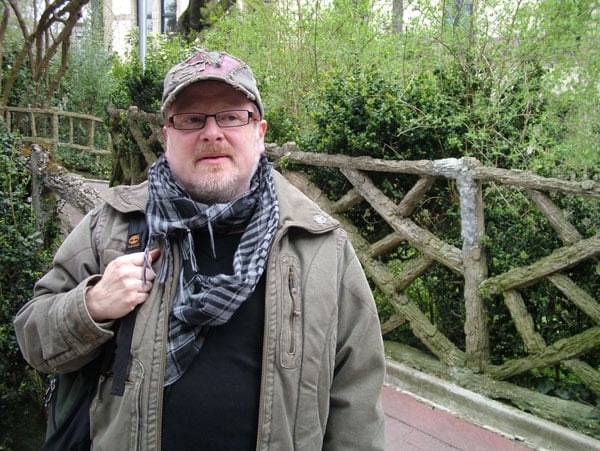
A Spanish archaeologist who was celebrated in 2006 for discovering one of the earliest representations of the crucifixion has been found guilty of faking the find—and several others.
Eliseo Gil has been sentenced to two years and three months in prison for falsifying records and artifacts, including one that incorrectly suggested that the written Basque language was six centuries older than previously known.
The scam was “one of the greatest falsifications or manipulations relating to archaeological materials from the Roman world,” the lead police officer on the case told the court, as reported by the Guardian.
Gil made headlines when he unveiled the results of excavations in Veleia, a Roman town near the Basque city of Vitoria, claiming his discoveries would “rewrite the history books,” but the authenticity of the artifacts was soon called into question.
By 2008, experts had pointed out several red flags. Some of the objects contained traces of modern glue and references to nonexistent gods. The much-lauded crucifixion scene read “RIP,” which contradicts Christian belief in the divinity of Jesus.
Spanish archaeologist Eliseo Gil claimed this pottery shard was an early depiction of the crucifixion, but the carving it has since proved to be a modern addition. Photo courtesy of the Álava Provincial Government.
Also suspicious were markings on pottery shards that were perfectly contained, as if they had been inscribed after being broken. And the spelling, punctuation, and grammar in some of the inscriptions was oddly anachronistic and riddled with errors (Jupiter was written with a “J” instead of an “I,” even though there is no “J” in the Latin alphabet, for instance.) Most damningly, the field archaeologists on the dig could not recall seeing these inscriptions, which turned up after lab analysis.
The court ruling against Gil determined that the 36 artifacts had been altered “with contemporary incisions that were intended to suggest they contained inscriptions or markings of the same age as the objects themselves, and that they possessed a historical and cultural value of which they were devoid.”
To make matters worse, these actions irreversibly damaged the authentic Roman artifacts.
The placement of this artwork seem to conveniently avoid the pottery’s broken edges. Photo courtesy of the Álava Provincial Government.
Gil and his collaborator, physicist Rubén Cerdán, who drafted false reports proclaiming the artifacts’ authenticity, were found guilty of fraud and keeping false records, with a 15-month sentence for Cerdán. The court ordered the men to pay the local government which funded the archaeological dig €12,500 ($14,000).
A third defendant, geologist Óscar Escribano, was sentenced to a year in jail after pleading guilty earlier this year. He claimed the incident was “nothing more than a joke,” according to El Diario.
Gil’s lawyer, Javier Martínez, said he would appeal the verdict, telling the EITB radio station that “it has not been proven that the pieces are false, nor, in the event that some of them are false, who falsified them.”